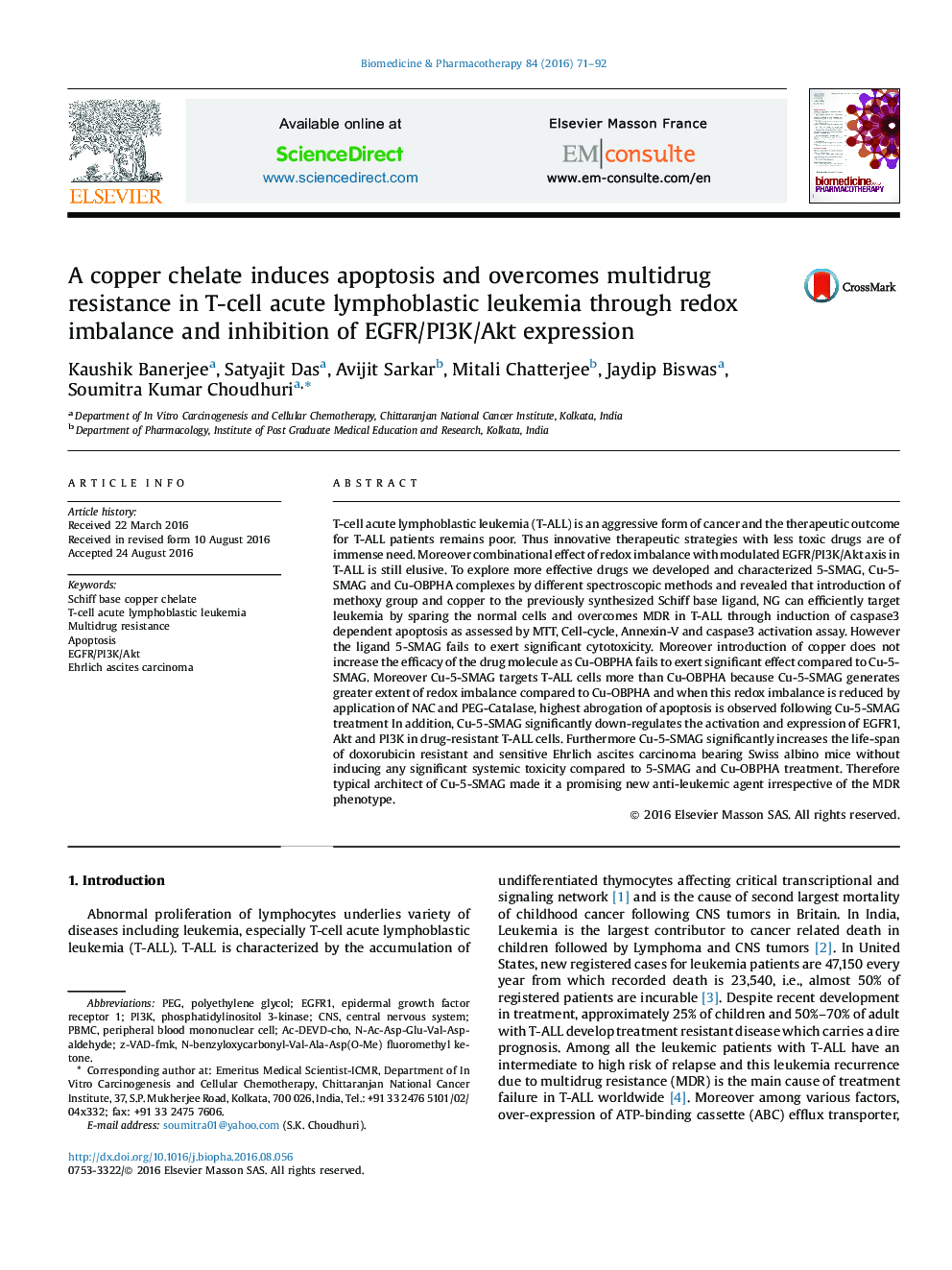| کد مقاله | کد نشریه | سال انتشار | مقاله انگلیسی | نسخه تمام متن |
|---|---|---|---|---|
| 5553343 | 1557958 | 2016 | 22 صفحه PDF | دانلود رایگان |

- Cu-5-SMAG but not its ligand 5-SMAG targets leukemic cells while sparing the normal cells.
- Through redox imbalance and induction of apoptosis Cu-5-SMAG overcomes MDR in T-ALL.
- Cu-5-SMAG downregulates EGFR1, Akt activation and PI3K expression in CEM/ADR5000 cells.
- Cu-5-SMAG significantly increases the life-span of EAC/Dox and EAC/S bearing mice without inducing any significant side effects.
- Mere introduction of Cu doesn't made a molecule effective as Cu-OBPHA fails to exert similar effect like Cu-5-SMAG.
T-cell acute lymphoblastic leukemia (T-ALL) is an aggressive form of cancer and the therapeutic outcome for T-ALL patients remains poor. Thus innovative therapeutic strategies with less toxic drugs are of immense need. Moreover combinational effect of redox imbalance with modulated EGFR/PI3K/Akt axis in T-ALL is still elusive. To explore more effective drugs we developed and characterized 5-SMAG, Cu-5-SMAG and Cu-OBPHA complexes by different spectroscopic methods and revealed that introduction of methoxy group and copper to the previously synthesized Schiff base ligand, NG can efficiently target leukemia by sparing the normal cells and overcomes MDR in T-ALL through induction of caspase3 dependent apoptosis as assessed by MTT, Cell-cycle, Annexin-V and caspase3 activation assay. However the ligand 5-SMAG fails to exert significant cytotoxicity. Moreover introduction of copper does not increase the efficacy of the drug molecule as Cu-OBPHA fails to exert significant effect compared to Cu-5-SMAG. Moreover Cu-5-SMAG targets T-ALL cells more than Cu-OBPHA because Cu-5-SMAG generates greater extent of redox imbalance compared to Cu-OBPHA and when this redox imbalance is reduced by application of NAC and PEG-Catalase, highest abrogation of apoptosis is observed following Cu-5-SMAG treatment In addition, Cu-5-SMAG significantly down-regulates the activation and expression of EGFR1, Akt and PI3K in drug-resistant T-ALL cells. Furthermore Cu-5-SMAG significantly increases the life-span of doxorubicin resistant and sensitive Ehrlich ascites carcinoma bearing Swiss albino mice without inducing any significant systemic toxicity compared to 5-SMAG and Cu-OBPHA treatment. Therefore typical architect of Cu-5-SMAG made it a promising new anti-leukemic agent irrespective of the MDR phenotype.
211
Journal: Biomedicine & Pharmacotherapy - Volume 84, December 2016, Pages 71-92